Cloudy water is a common concern among fish tank owners, but rest assured, it will not harm your fish. In fact, it’s often a natural occurrence in a new aquarium. Understanding the causes and effects of cloudy water can help ease your worries and ensure the health and well-being of your fish.
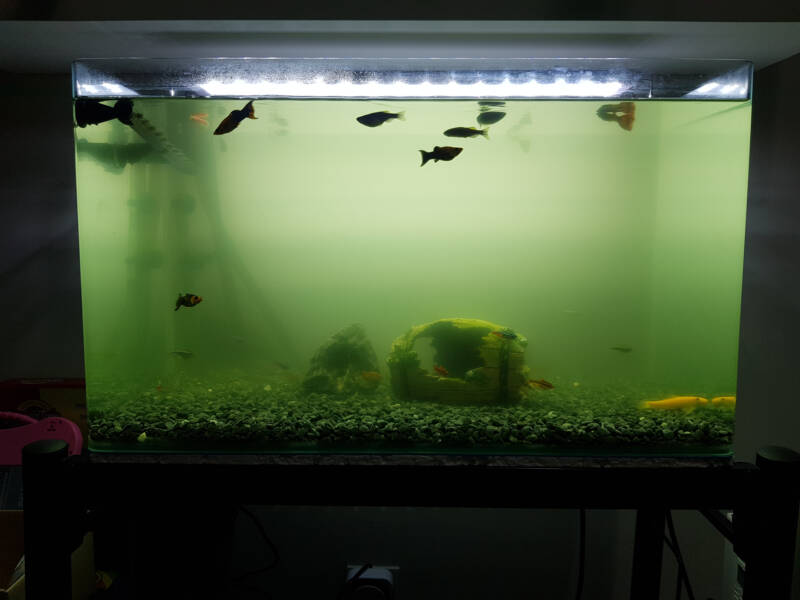
Cloudy Aquarium Water: Friend or Foe?
Cloudy aquarium water, a common concern for fish keepers, can be both a friend and foe. In a new fish tank, a temporary haze often signals the presence of good bacteria, essential for a healthy ecosystem.
However, persistent cloudiness, especially in established tanks, can be a sign of trouble. Uneaten fish food and excess fish waste from too many fish are common culprits.
Definition of Cloudy Water
Cloudy water, also known as milky water, refers to the condition where the water in your fish tank becomes hazy or opaque. It can give your tank a murky appearance, making it difficult to see your fish clearly. This cloudiness is caused by various factors that disrupt the balance of your aquarium’s ecosystem.
Causes of Cloudy Water
There are several common causes of cloudy water in fish tanks:
1. Overfeeding
Overfeeding your fish can lead to excess food particles floating in the water. These particles contribute to the cloudiness and can also increase the level of waste in your tank, negatively impacting water quality.
2. Poor Filtration
Insufficient or inadequate filtration can result in cloudy water. A filtration system helps remove debris, toxins, and excess nutrients from the water. If your filter is clogged or not functioning properly, it may not be able to effectively clear the water, leading to cloudiness.
3. Bacterial Bloom
Bacterial blooms occur when there is an excessive growth of bacteria in the tank. This can happen due to an imbalance in the nitrogen cycle or a sudden increase in nutrients, often caused by overfeeding or an accumulation of waste. Bacterial blooms can cause the water to appear cloudy or greenish.
4. Chemical Imbalance
A chemical imbalance, such as high ammonia or nitrate levels, can lead to cloudy water. These imbalances can be caused by a variety of factors, including overstocking, insufficient water changes, or inadequate water treatment.
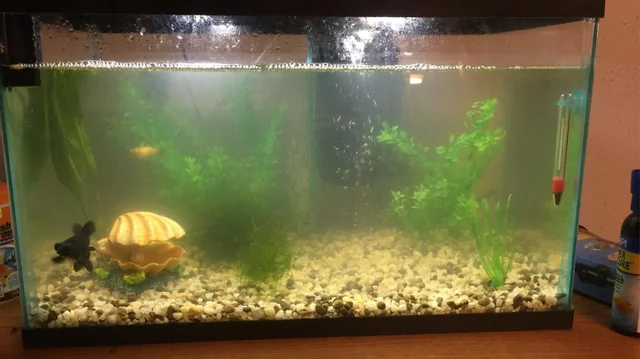
For a more indebt look at why your tank has cloudy water check out our article here
Effects of Cloudy Water on Fish
While cloudy water itself will not directly harm your fish, it can have indirect effects on their health and well-being if left unaddressed.
1. Reduced Oxygen Levels
Cloudy water can decrease the amount of oxygen available to your fish. This is because the suspended particles in cloudy water can interfere with the gas exchange at the water’s surface. Reduced oxygen levels can lead to stress and respiratory issues in fish.
2. Increased Stress on Fish
Fish rely on clear water for navigation and communication. Cloudy water can disorient them and cause stress, as they may struggle to locate their hiding places or interact with other tank mates. Prolonged exposure to stressful conditions can weaken their immune system and make them more susceptible to diseases.
3. Impact on Overall Health and Well-being
When your fish are exposed to poor water quality, their overall health and well-being can suffer. Cloudy water can be an indication of an unhealthy tank environment. Fish living in such conditions may experience decreased appetite, sluggishness, and increased vulnerability to illnesses.
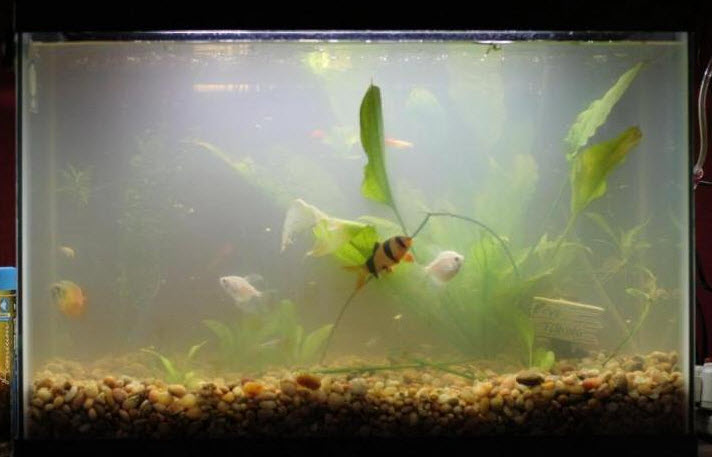
Identifying Cloudy Water in Your Fish Tank
Being able to identify cloudy water is essential for maintaining a healthy aquarium. Here are some tips to help you recognize if your tank is experiencing cloudiness:
Visual Signs of Cloudy Water
Cloudy water is typically easy to detect by visually observing your tank. If your water appears milky, hazy, or has a white or greenish tint, it’s likely that you have cloudy water.
Testing Water Parameters
To determine the cause of the cloudy water, it’s important to test the water parameters. Use test kits to check the levels of ammonia, nitrite, nitrate, pH, and other key parameters. This will help you identify any imbalances or issues that may be contributing to the cloudiness.
Preventing Cloudy Water
Prevention is the key to maintaining clear water in your fish tank. By following these preventative measures, you can greatly reduce the likelihood of cloudy water:
Proper Feeding Practices
Avoid overfeeding your fish. Only give them the amount of food they can consume within a few minutes. This will help prevent excess food particles from accumulating in the water.
Regular Water Changes
Perform regular water changes to remove accumulated waste, excess nutrients, and maintain water quality. Aim for changing approximately 25% of the water every 1-2 weeks, depending on your tank’s needs.
Use of Appropriate Filtration Systems
Invest in a high-quality filtration system that is suitable for your tank size and fish population. Ensure the filter is properly cleaned and functioning optimally to effectively remove impurities and maintain clear water.
Maintaining a Balanced Ecosystem
Maintain a well-balanced ecosystem in your aquarium by adding live plants, which naturally help to filter the water, and introducing beneficial bacteria to establish a stable nitrogen cycle. This can help prevent cloudy water caused by bacterial blooms.

Clearing Cloudy Water in Your Fish Tank
If you already have cloudy water in your fish tank, don’t worry. You can take steps to address the issue:
Cleaning Filters
Clean and rinse your filters regularly. Clogged filters can contribute to cloudiness by trapping debris and preventing proper water circulation. Follow the manufacturer’s instructions for cleaning and maintaining your specific filter type.
Adjusting Chemical Levels
Test the water parameters and adjust any imbalances by adding appropriate water conditioners or treatments. This may involve removing excess ammonia or nitrate and stabilizing the pH levels.
Introducing Beneficial Bacteria
Supplement your tank with beneficial bacteria products to promote a healthy bacterial balance. These bacteria can help break down organic waste and prevent bacterial blooms that cause cloudy water.
Potential Treatments for Severe Cases
In severe cases of cloudy water, additional treatments such as flocculants or activated carbon may be necessary. These products help to bind and remove suspended particles, clearing the water more quickly. However, it’s important to use them carefully and follow the instructions to avoid any negative effects on your fish.
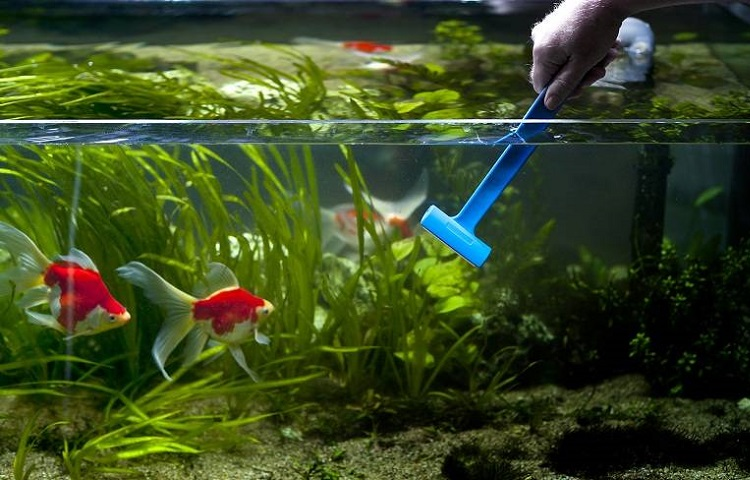
Maintaining Clean and Clear Water
To maintain clean and clear water in your fish tank, establish a regular maintenance routine. Here are some tips:
Establishing a Regular Maintenance Routine
Create a schedule for regular water changes, filter cleanings, and testing water parameters. Consistency is key to maintaining optimal water quality.
Monitoring Water Quality Parameters
Regularly test and monitor the water parameters to quickly identify any issues before they worsen. This will help you take proactive action to prevent cloudy water and maintain a healthy tank.
Importance of Observation and Addressing Issues Promptly
Be observant of your fish’s behavior and appearance. Any changes in behavior, appetite, or physical condition may indicate a problem with water quality. Address these issues promptly to prevent further complications.
Maintaining a Clear Aquarium: Essential Tips for Happy, Healthy Fish
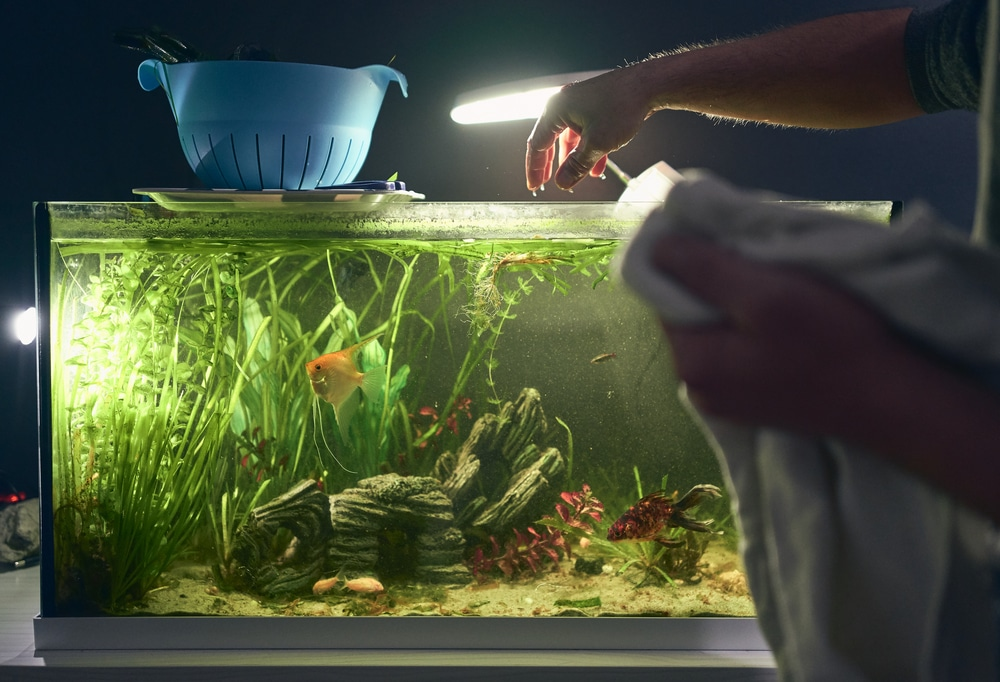
Cloudy fish tank water can be a sign of good bacteria establishing themselves in a new tank, or a sign of trouble in an established one. Maintaining crystal-clear fish tank water is essential for the health and well-being of your fish. To maintain crystal-clear water for your tropical fish, monitor how many fish are in your tank. Overfeeding also contributes to cloudy water, so feed sparingly.
Regular maintenance, including removing uneaten food and performing partial water changes, is crucial. An air pump ensures proper oxygenation, while a good filter helps remove debris and promote beneficial bacteria growth. If green water caused by algae is the issue, reduce light exposure and consider algae-control treatments.
Conclusion
In conclusion, cloudy water in your fish tank will not harm your fish directly. However, it can indirectly affect their health and well-being if left unaddressed. By understanding the causes, effects, and preventive measures for cloudy water, you can ensure a clean and healthy environment for your fish. Regular maintenance, proper feeding, and maintaining a balanced ecosystem are key to preventing and clearing cloudy water in your fish tank.
Frequently Asked Questions (FAQs)
Q: Will cloudy water kill my fish?
No, cloudy water itself will not kill your fish. However, it may indicate underlying issues with water quality that can lead to fish health problems if not addressed.
Q: How often should I change the water in my fish tank?
Aim to change approximately 25% of the water every 1-2 weeks, depending on your tank’s needs. Regular water changes help maintain optimal water quality.
Q: Can I use chemical clarifiers to clear cloudy water?
Chemical clarifiers, such as flocculants or activated carbon, can be used to clear cloudy water. However, use them carefully and follow the instructions to avoid any negative effects on your fish.


